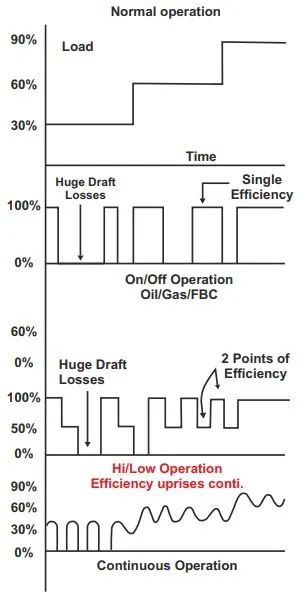Avoid Frequent Changes to the Boiler Fuel Firing System
Frequent changes to the boiler fuel firing system destabilises combustion, resulting in higher fuel consumption. This leads to poor boiler efficiencies and higher fuel bills
Most boilers operate on a combustion control scheme where, for variation in combustion, air flow is varied first followed by fuel flow. This is called a “cross limiting” control scheme. Thus when the boiler fuel firing is changed from low fire to high fire, the burner first increases the air flow and then the fuel flow. During this period greater heat is carried away with the air to the stack reducing the overall efficiency. Same is the case when the burner switches from high fire to low fire.

Frequent changes to fuel firing system thus destabilise combustion, resulting in higher fuel consumption. By rule of thumb, the maximum acceptable flue gas temperature is 30°C over the steam temperature. Also every 20°C deviation from optimum flue gas temperature increases the fuel consumption by 1%. These losses are typical for plants with frequent fluctuation in steam load.
For new establishments selecting the right capacity boiler, it is important to bear in mind the load fluctuations typical to a sector. Right boiler capacity selection in he first place eliminates operational losses.
In case of existing establishments, by analysing the plant load pattern, it is possible to make adjustments to the boiler so as to minimise the losses.
